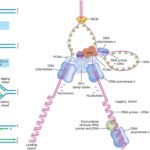IGCSE Biology 79 Views 1 Answers
Sourav PanLv 9November 15, 2024
Describe the effects of untreated sewage and excess fertiliser on aquatic ecosystems
Describe the effects of untreated sewage and excess fertiliser on aquatic ecosystems
Please login to save the post
Please login to submit an answer.
Sourav PanLv 9May 15, 2025
The effects of untreated sewage and excess fertilizer on aquatic ecosystems are profound and multifaceted, leading to significant ecological imbalances and health risks for both aquatic life and humans. Below is a detailed examination of these impacts.
Effects of Untreated Sewage
- Eutrophication: Untreated sewage often contains high levels of nutrients, particularly nitrogen and phosphorus, which stimulate excessive growth of algae in water bodies. This process, known as eutrophication, can lead to harmful algal blooms that block sunlight from reaching submerged plants, disrupting photosynthesis and causing plant die-off.
- Oxygen Depletion: As algal blooms die and decompose, the decomposition process consumes large amounts of dissolved oxygen in the water. This can create hypoxic (low oxygen) or anoxic (no oxygen) conditions, leading to fish kills and the decline of other aerobic aquatic organisms. Species that rely on high oxygen levels, such as stoneflies and mayflies, are particularly vulnerable.
- Toxicity: Some algal blooms produce toxins that are harmful not only to aquatic life but also to humans and animals that come into contact with or consume contaminated water. For instance, blue-green algae can produce neurotoxins that affect the nervous system of fish and mammals.
- Pathogen Introduction: Sewage discharge introduces pathogens into aquatic environments, posing risks to wildlife and humans. Contaminated water can lead to diseases such as gastroenteritis in humans and can significantly impact public health.
- Biodiversity Loss: The changes in water quality due to sewage pollution can lead to a decline in biodiversity. Sensitive species may disappear from affected areas, leading to altered food webs and ecosystem dynamics.
Effects of Excess Fertilizer
- Nutrient Runoff: Excessive application of fertilizers leads to nutrient runoff during rainfall or irrigation events, which contributes significantly to the nutrient loading in nearby lakes, rivers, and coastal waters. This runoff primarily contains nitrogen and phosphorus, which are key contributors to eutrophication.
- Accelerated Eutrophication: Similar to untreated sewage, excess fertilizers cause rapid algal growth in water bodies. This accelerated eutrophication results in similar consequences: oxygen depletion during algal die-off, leading to dead zones where aquatic life cannot survive.
- Dead Zones: Areas with severe nutrient pollution can become “dead zones,” regions where oxygen levels are so low that most marine life cannot thrive. The Gulf of Mexico is a prominent example of this phenomenon, where agricultural runoff has created vast areas devoid of life due to hypoxia.
- Water Quality Degradation: The introduction of excess nutrients from fertilizers not only affects aquatic organisms but also degrades overall water quality, making it unsuitable for drinking or recreational use due to increased turbidity and potential contamination with harmful substances.
- Long-term Soil Health Impact: Continuous reliance on chemical fertilizers can lead to soil degradation over time, affecting the long-term sustainability of agricultural practices and potentially increasing reliance on further chemical inputs
0
0 likes
- Share on Facebook
- Share on Twitter
- Share on LinkedIn
0 found this helpful out of 0 votes
Helpful: 0%
Helpful: 0%
Was this page helpful?




